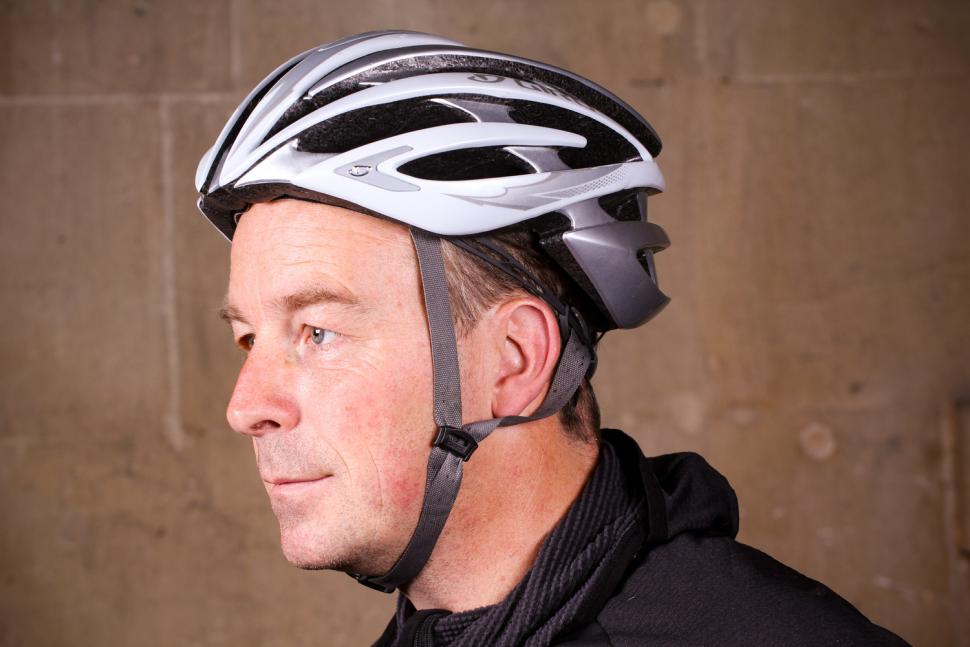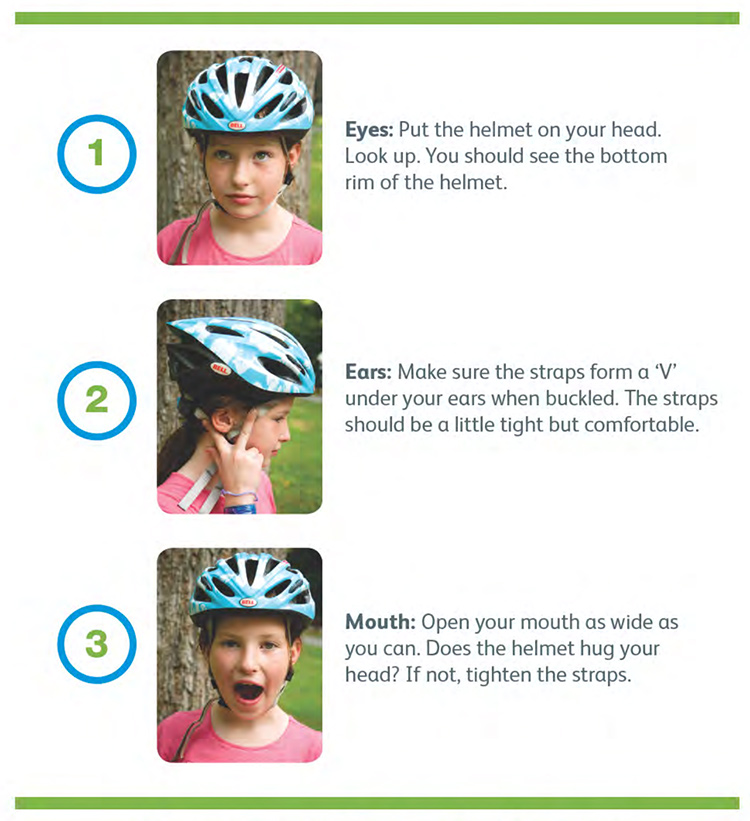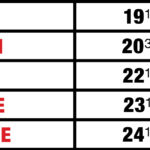A bicycle helmet should fit snugly but not cause discomfort. It shouldn’t move when you shake your head.
Ensuring your bicycle helmet fits properly is crucial for safety. A well-fitted helmet protects your head during falls or collisions. Make sure the helmet sits level on your head and covers your forehead. The straps should form a V shape under your ears.
Adjust the side and chin straps for a secure fit without pinching. A snug helmet minimizes movement but shouldn’t cause pain. Regularly check the fit, especially after adjustments. Remember, a good fit enhances protection and comfort. Prioritize helmet fit every time you ride to maximize safety and enjoy a worry-free biking experience.
Importance Of Helmet Fit
A well-fitted bicycle helmet is crucial for safety. It can save lives and prevent injuries. A helmet that fits properly offers the best protection.
Safety First
The primary function of a bicycle helmet is protection. A helmet that fits well absorbs impact better. It reduces the risk of head injuries.
Use the following checklist to ensure a safe fit:
- The helmet should sit level on your head.
- The front edge should be one inch above your eyebrows.
- Straps should form a V under each ear.
Follow these steps for a secure fit. This ensures maximum safety.
Comfort Matters
A helmet should also be comfortable. If it’s too tight, it can cause headaches. If it’s too loose, it may shift during a ride.
Here are tips for comfort:
- Adjust the straps for a snug fit.
- Use padding inside the helmet for better comfort.
- Make sure it doesn’t press too hard on any part of your head.
Comfort helps you focus on the ride. A well-fitted helmet makes biking enjoyable.
Measuring Your Head
Finding the right fit for a bicycle helmet is crucial. It ensures safety and comfort. This guide will help you measure your head correctly.
Tools Needed
- Flexible measuring tape
- Mirror
- Pen and paper
Finding The Right Size
Follow these steps to find the perfect helmet size:
- Stand in front of a mirror.
- Wrap the measuring tape around your head.
- Place it just above your eyebrows and ears.
- Ensure the tape is level all around.
- Note the measurement in centimeters.
Compare your measurement to a helmet size chart. Most brands provide these charts. Find the size range that matches your measurement.
If your measurement is between sizes, choose the smaller one. Helmets should fit snugly but not too tight.
Use this table to understand typical helmet sizes:
| Head Circumference (cm) | Helmet Size |
|---|---|
| 50 – 54 | Small |
| 54 – 58 | Medium |
| 58 – 62 | Large |
Remember, a well-fitted helmet is essential for safety. Always double-check your size before purchasing.
Adjusting The Helmet
Properly adjusting your bicycle helmet is crucial for safety. A well-fitted helmet can prevent injuries. Let’s look at how to adjust it correctly.
Strap Adjustments
Strap adjustments are essential for helmet stability. The straps should form a “V” shape under your ears.
- Buckle the chin strap. It should be snug, but not too tight.
- Adjust the side straps. Ensure they sit just below your ears.
- Tighten the back strap. Make sure it’s secure and comfortable.
Check that you can fit one or two fingers between the strap and your chin. This ensures it’s snug but not choking you. Always adjust the straps while wearing the helmet.
Dial Systems
Some helmets have dial systems for easy adjustment. These are usually located at the back of the helmet.
- Locate the dial. It’s usually at the back.
- Turn the dial. Turn it to tighten or loosen the fit.
- Check the fit. The helmet should be snug but comfortable.
Dial systems offer a quick way to adjust the helmet. They are great for finding the perfect fit. Always ensure the helmet sits level on your head. It should not tilt forward or backward.
Proper adjustment ensures your helmet provides maximum protection. Make these adjustments every time you ride.

Credit: www.liv-cycling.com
Positioning The Helmet
Ensuring your bicycle helmet fits correctly is crucial for safety. A well-positioned helmet provides optimal protection during rides. Let’s dive into the essentials of positioning the helmet.
Proper Placement
A properly placed helmet sits level on your head. The front should be low on the forehead. This positioning ensures the helmet stays in place during a fall.
- Check that the helmet is centered on your head.
- Adjust the straps to form a ‘V’ shape under your ears.
- Tighten the straps so the helmet feels snug.
A level helmet covers the front, top, and back of your head. This alignment provides full protection.
Forehead Coverage
Forehead coverage is a key aspect of helmet positioning. The helmet should cover your forehead properly.
Place the helmet about two fingers’ width above your eyebrows. This placement ensures your forehead is well-protected.
Proper forehead coverage minimizes the risk of head injuries. It also ensures the helmet stays in place during rides.
| Step | Action |
|---|---|
| 1 | Position the helmet low on your forehead. |
| 2 | Adjust the straps for a snug fit. |
| 3 | Check the helmet’s level on your head. |
Ensure the helmet is not tilted back. A tilted helmet exposes your forehead to risks.
Checking Helmet Tightness
Ensuring your bicycle helmet fits correctly is crucial for safety. A loose helmet can shift during a fall, providing inadequate protection. A helmet that is too tight can cause discomfort. Let’s learn how to check your helmet’s tightness using simple tests.
Tilt Test
Start by placing the helmet on your head. Use both hands to hold the helmet. Now, try to tilt it forward and backward. The helmet should stay snug without moving. If it tilts easily, tighten the straps.
Shake Test
Put the helmet on and secure the chinstrap. Shake your head side to side. The helmet should not move. If it shakes, adjust the fit. Ensure the helmet stays in place during vigorous movement.

Credit: road.cc
Common Fit Mistakes
Ensuring a correct fit for your bicycle helmet is crucial. Many cyclists make common fit mistakes that compromise safety. Let’s explore these mistakes.
Too Loose
A helmet that’s too loose can easily slip off. This negates its protective purpose. Here are signs your helmet might be too loose:
- It wobbles side to side.
- It slides backward when you tilt your head.
- Straps dangle even when tightened.
To correct this, adjust the straps and padding. Make sure it feels snug but comfortable.
Too Tight
A helmet that’s too tight is uncomfortable. It can cause headaches and pressure points. Signs of a too-tight helmet include:
- Red marks on your forehead.
- Difficulty in securing the buckle.
- Feeling of constant pressure.
Loosen the straps and padding slightly. Your helmet should be secure but not painful.
Special Considerations
When ensuring the right fit for a bicycle helmet, special considerations are crucial. These considerations vary depending on the rider and the activity. This section will cover important aspects like children’s helmets and helmets for different activities.
Children’s Helmets
Children’s heads are not the same as adults’. Their heads are still growing. It’s vital to fit their helmets correctly.
- Measure their head size: Use a soft tape measure. Measure just above their eyebrows and ears.
- Adjust the straps: Make sure the straps form a “V” shape under the ears.
- Check the fit: The helmet should not move more than one inch in any direction.
- Comfort matters: Ensure the child feels comfortable. They should want to wear the helmet.
Helmets For Different Activities
Different activities require different helmet types. Each activity has its own risks.
| Activity | Helmet Type | Fit Tips |
|---|---|---|
| Mountain Biking | Full-face helmet | Snug fit, covers chin and jaw |
| Road Cycling | Aero helmet | Lightweight, snug but comfortable |
| BMX Riding | Skate-style helmet | Extra padding, secure fit |
Each helmet type should fit snugly. It should not move around.
- Secure the straps: Make sure they are tight enough.
- Check the padding: It should sit comfortably on the head.
- Perform a shake test: The helmet should stay in place.
Proper helmet fit is essential for safety. Pay attention to these details.
Maintaining Helmet Fit
Proper helmet fit is essential for bike safety. It protects your head in a crash. A loose helmet won’t provide adequate protection. Regular maintenance ensures the helmet stays snug and secure.
Regular Checks
Check your helmet fit before every ride. Ensure the helmet sits level on your head. The front edge should be one to two fingers above your eyebrows. Adjust the straps so they form a “V” under your ears. Tighten the chin strap. You should fit one finger between the strap and your chin.
- Check the helmet for cracks or damage.
- Ensure the pads are intact and clean.
- Adjust the fit dial for a snug fit.
Replacing Worn Parts
Helmet parts wear out over time. Replace worn or damaged parts immediately. Check the padding and straps regularly. If they are frayed or stretched, get new ones. The fit dial can also wear out. Replace it if it stops adjusting properly.
| Helmet Part | Signs of Wear | Action |
|---|---|---|
| Pads | Flattened, torn, or missing | Replace |
| Straps | Frayed, stretched, or torn | Replace |
| Fit Dial | Loose, broken, or non-functional | Replace |
Always replace a helmet after a crash. Even if it looks fine, it may not protect you anymore. Safety is the priority.

Credit: safekidsgeorgia.org
Frequently Asked Questions
How Do I Know If My Helmet Is Too Tight?
A helmet is too tight if it causes discomfort or leaves marks on your skin. It should sit snugly on your head without causing pain.
How Tight Should A Bicycle Helmet Strap Be?
The strap should be snug but not restrictive. You should be able to fit two fingers between the strap and your chin.
Can A Loose Helmet Be Dangerous?
Yes, a loose helmet can shift during a crash, failing to protect your head. Ensure it fits snugly and securely.
How Do I Adjust A Bicycle Helmet Properly?
Adjust the straps and use the sizing pads or dial for a snug fit. The helmet should sit level on your head.
Conclusion
Ensuring your bicycle helmet fits snugly is crucial for safety. A proper fit can prevent serious injuries. Always adjust the straps and pads for a secure, comfortable fit. Remember, a well-fitted helmet should not move around. Prioritize your safety by checking your helmet’s fit before every ride.

